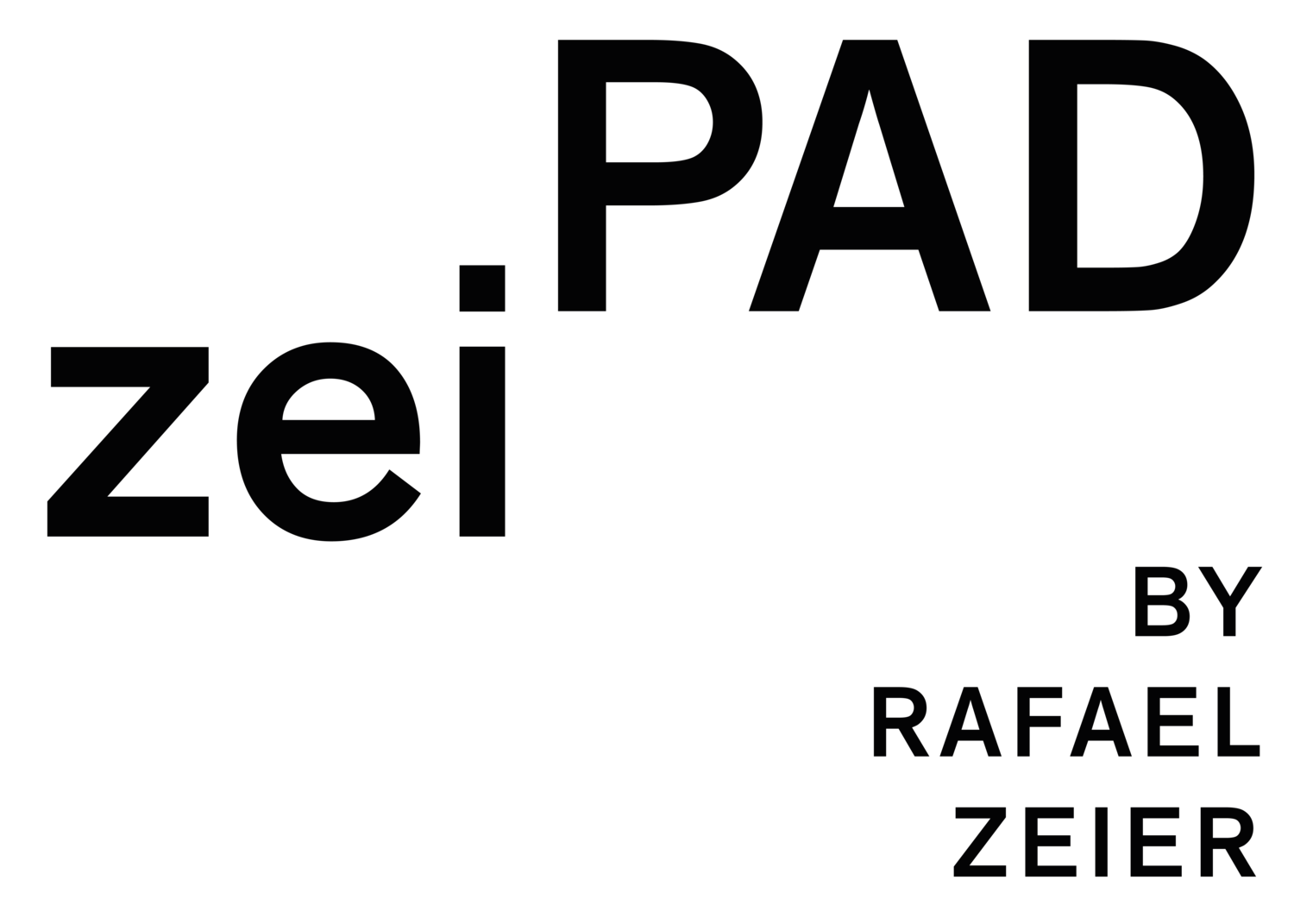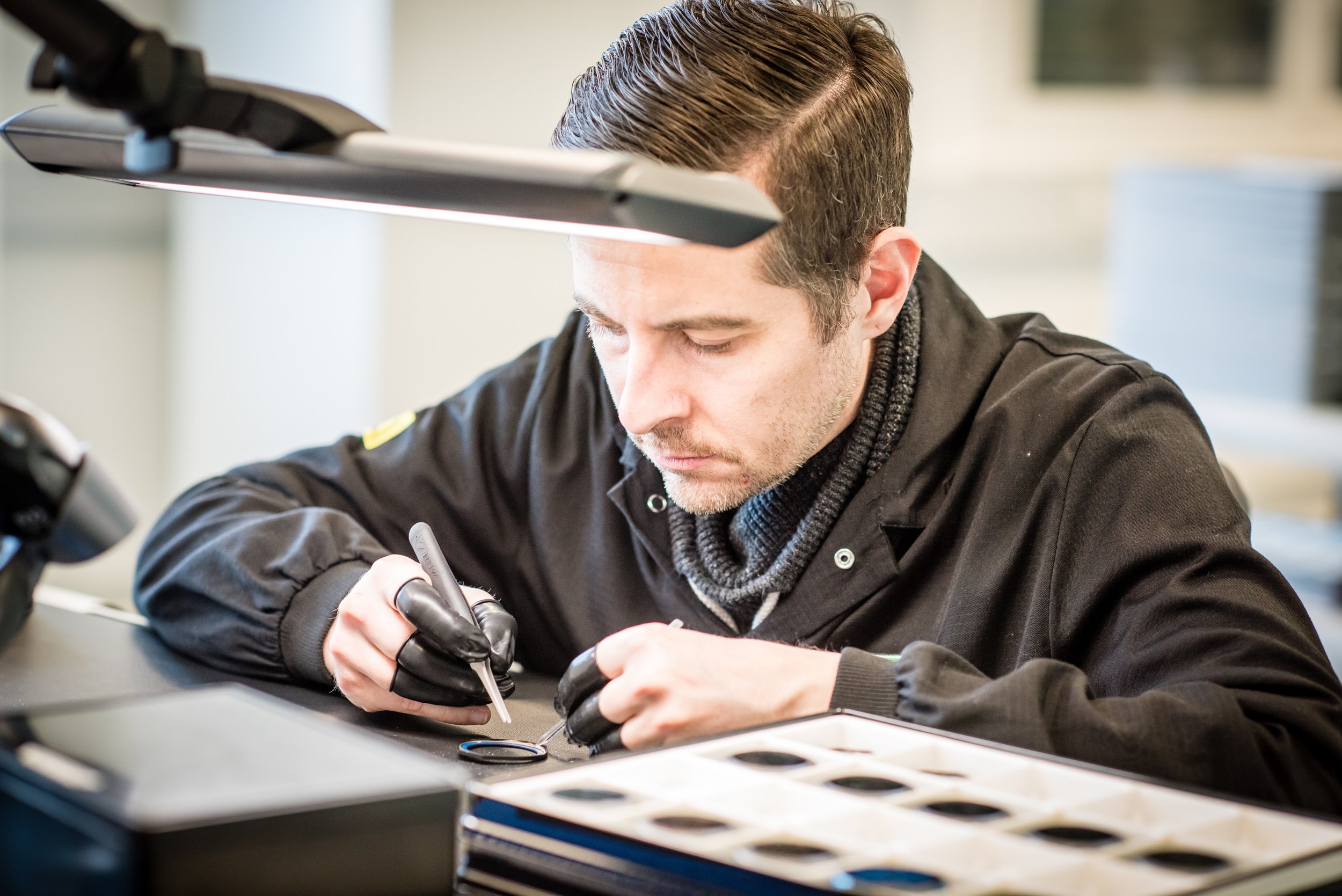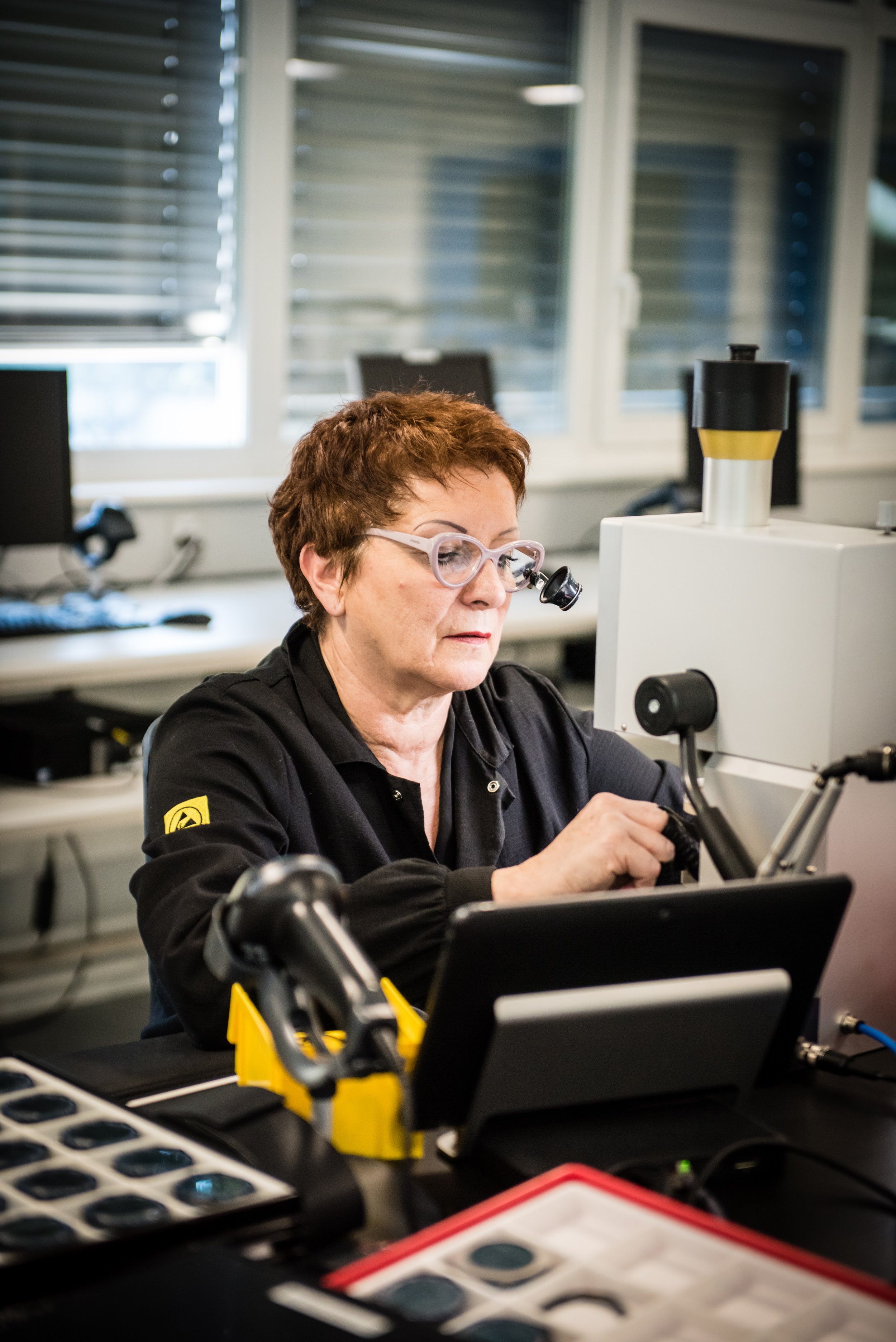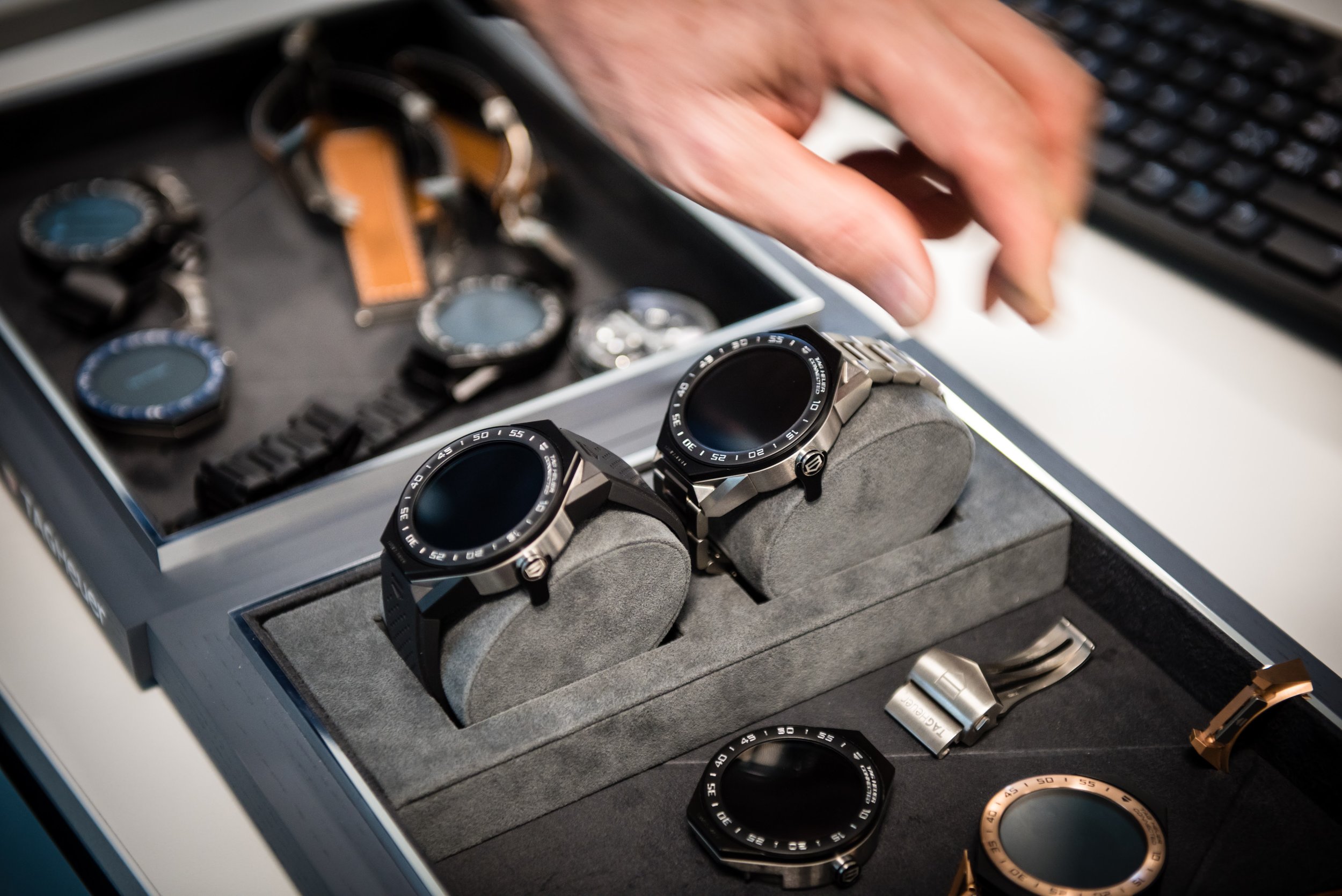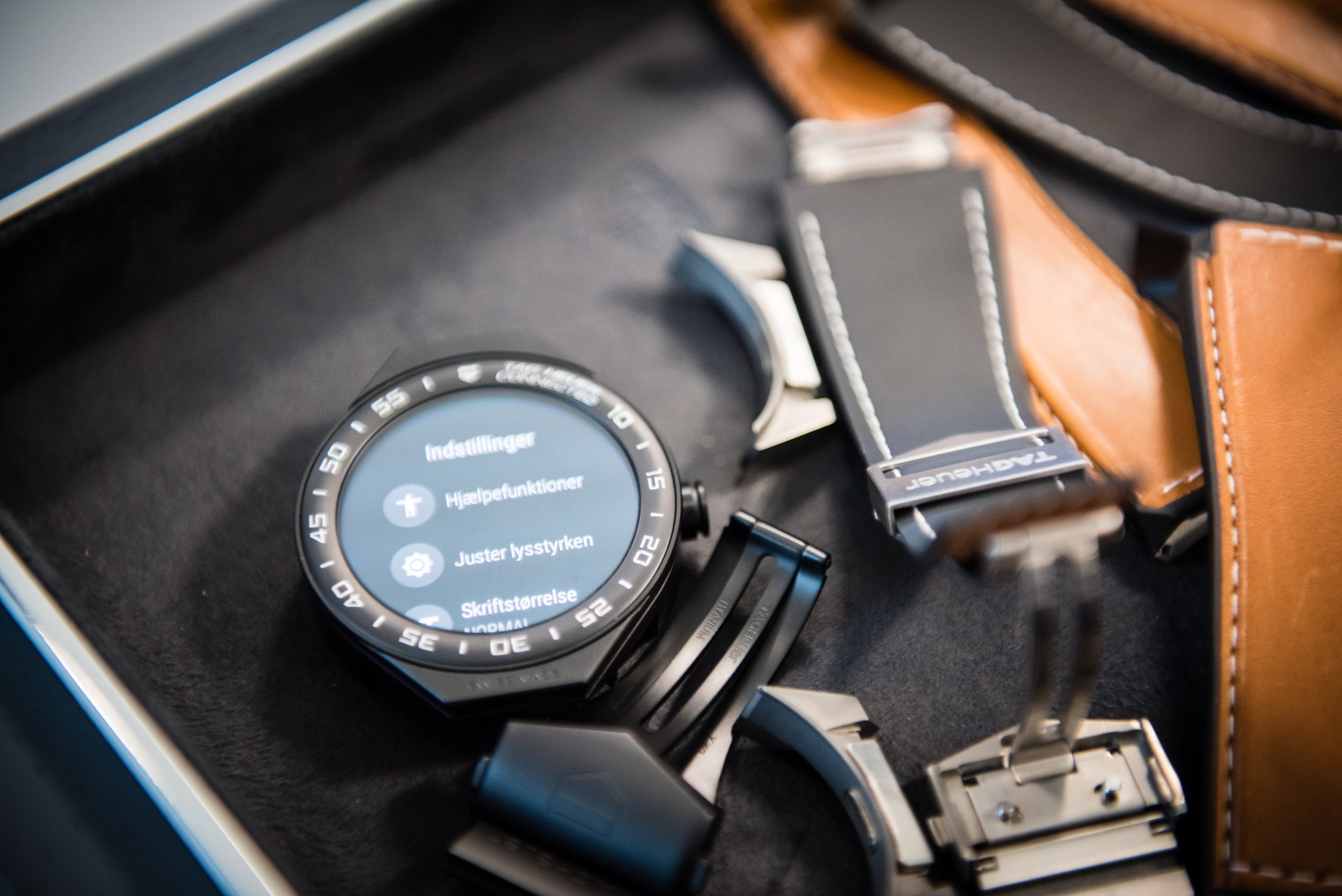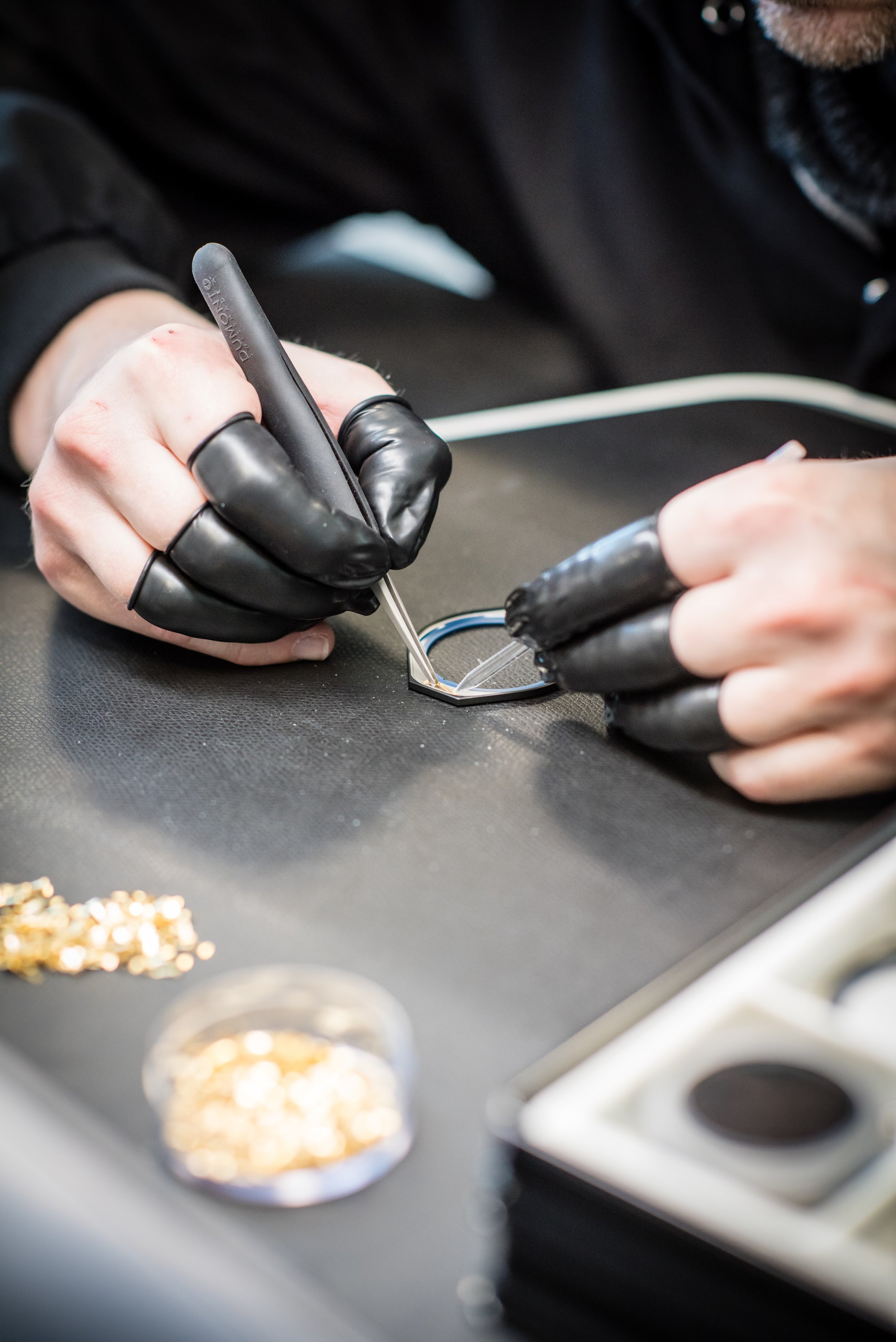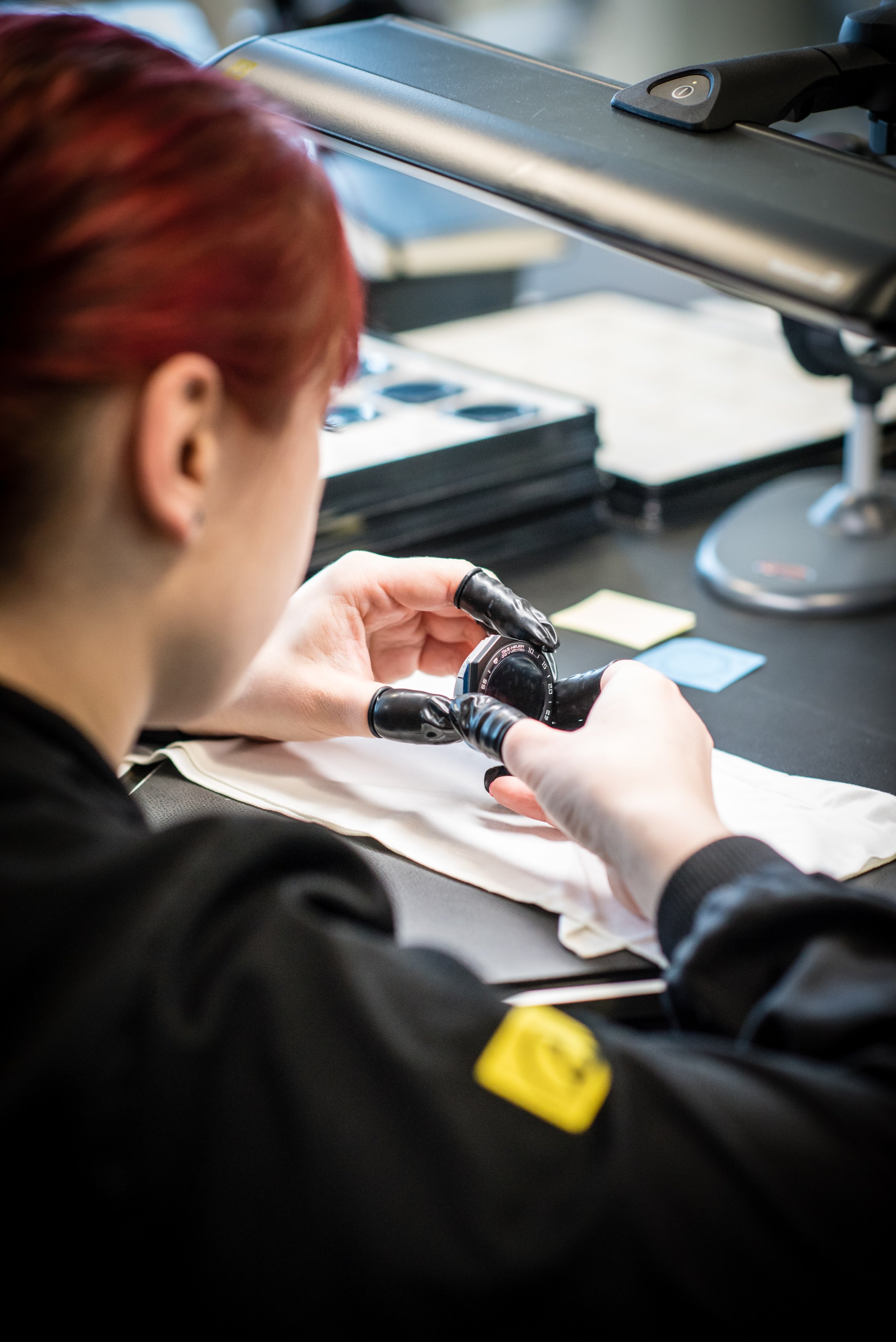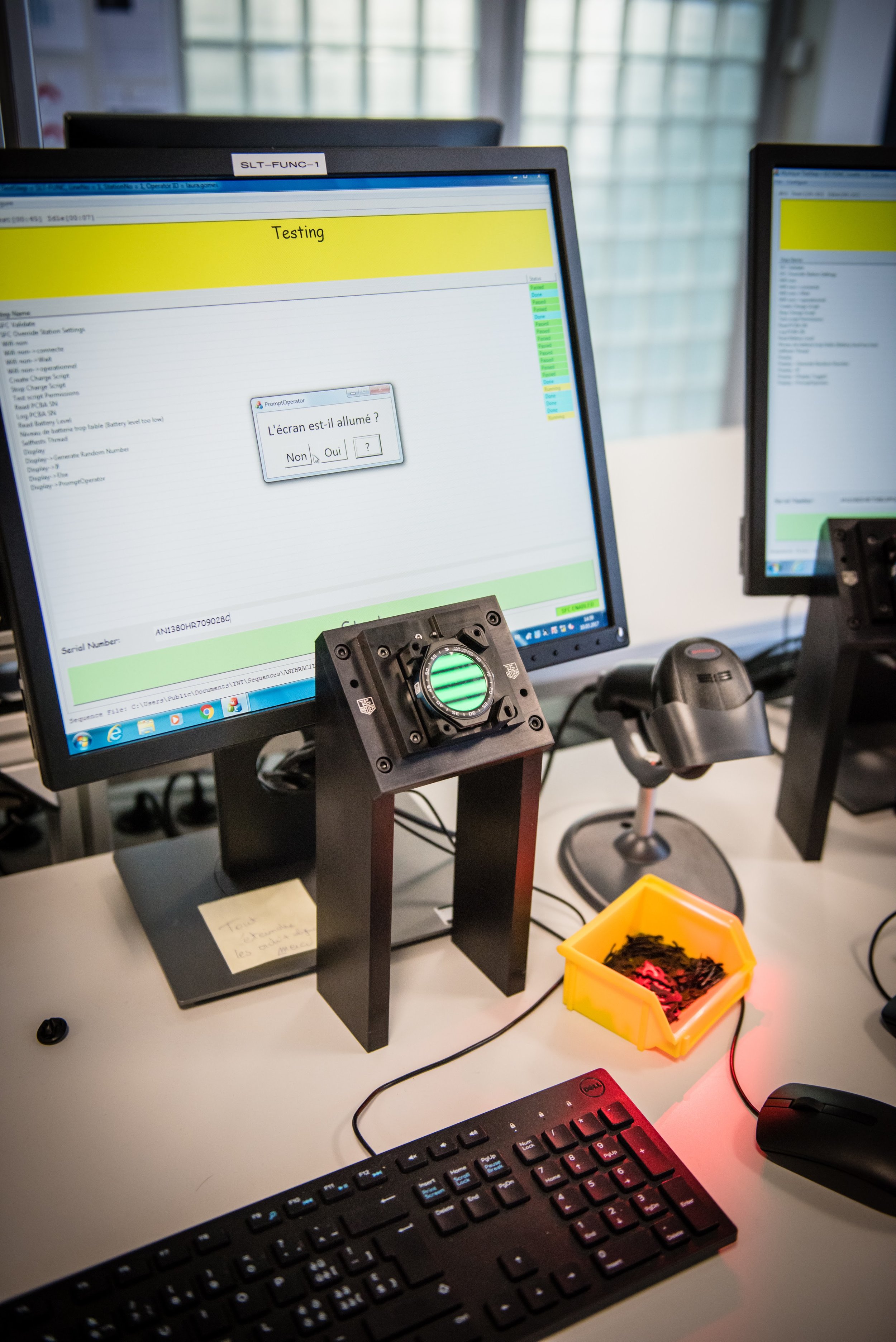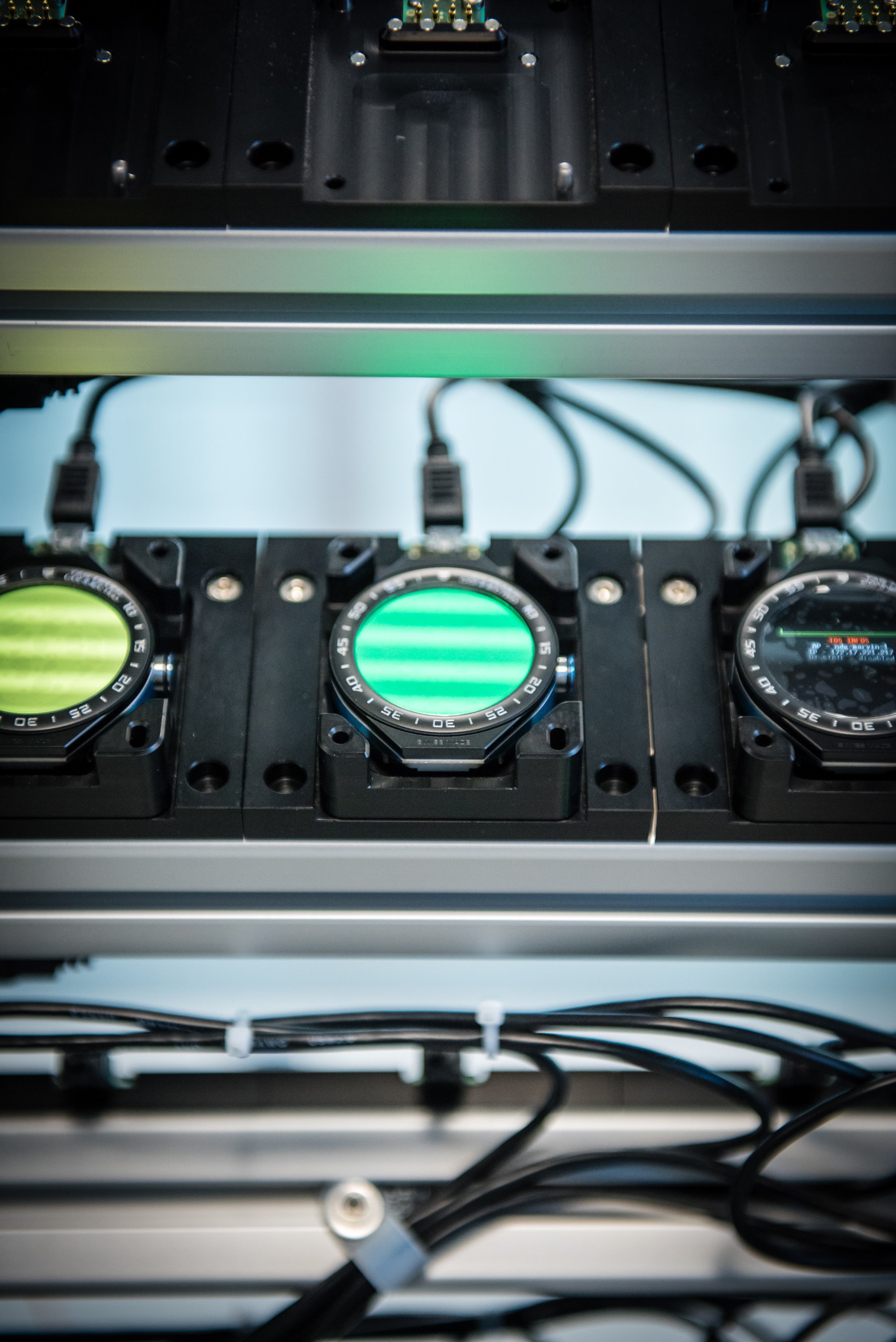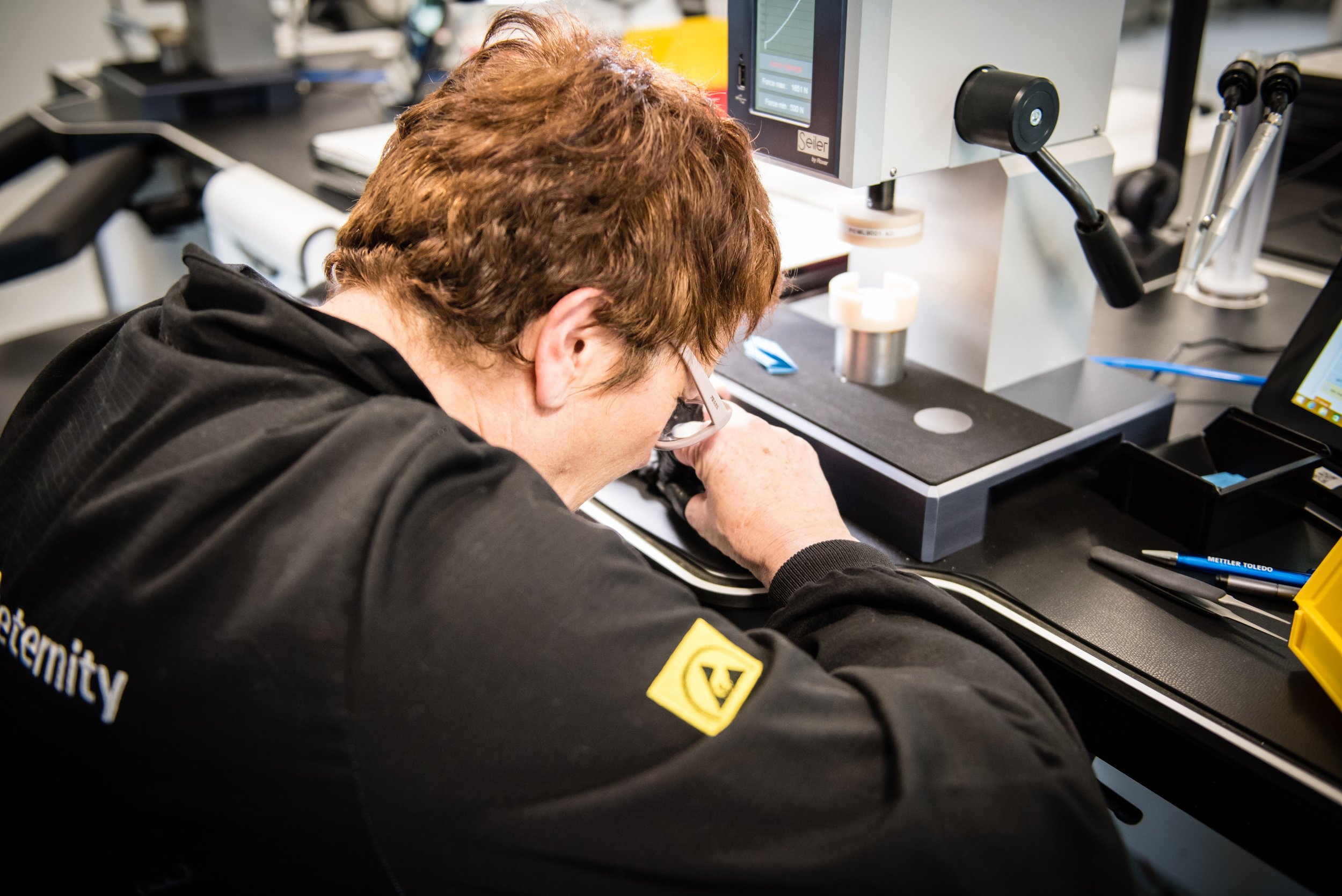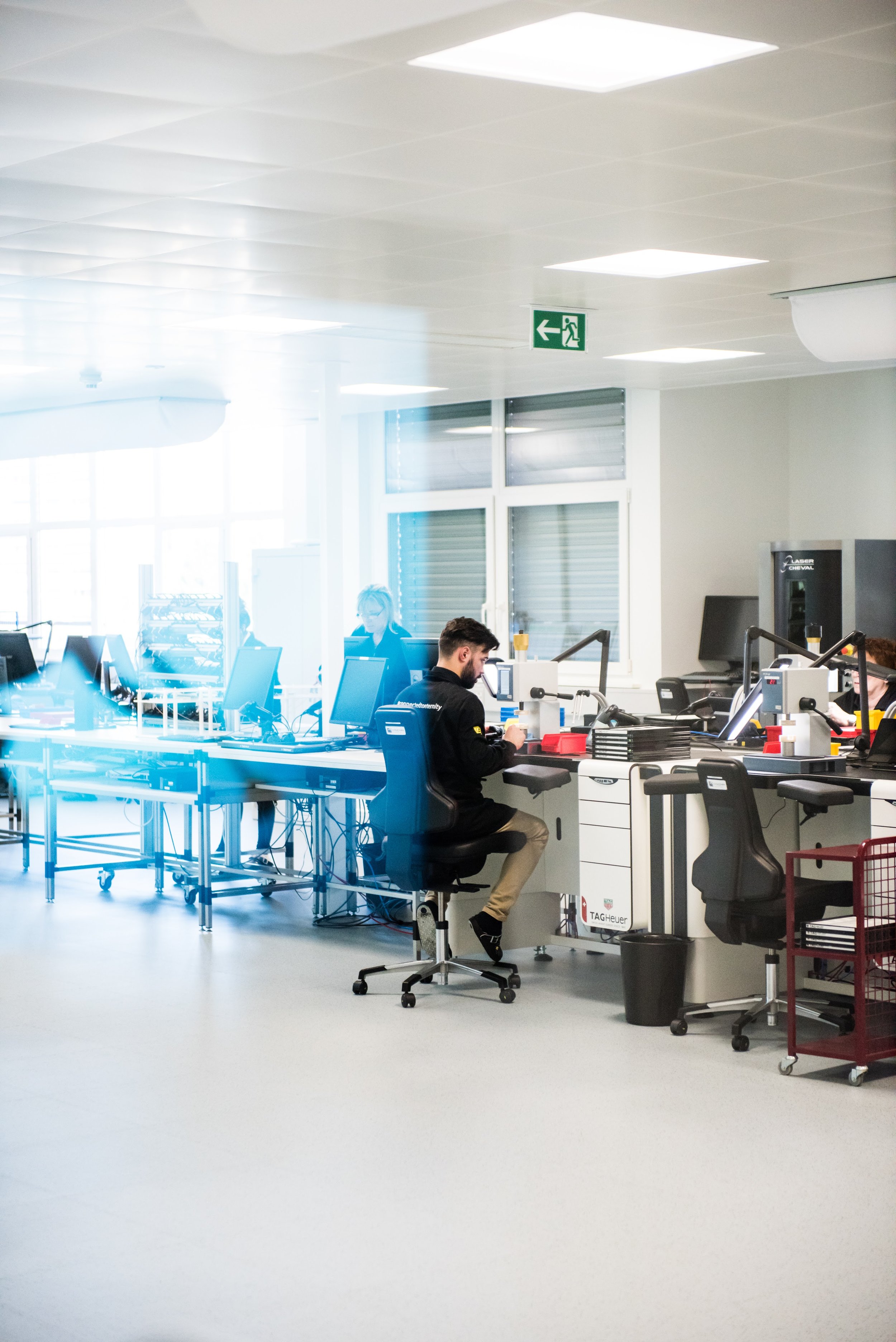Visiting the TAG Heuer Smartwatch Factory
Rafael Zeier (Text) Raffael Waldner (Photos)
A punk tries to shock the train passengers with loud music. In vain. The teenagers on their cell phones just think it's funny. In this respect, the regional train from Bienne to La Chaux-de-Fonds is a normal regional train. If it weren't for the familiar company signs that roll past the window.
The elderly couple in the neighboring compartment shout enthusiastically every time one of them appears:"Omega, ETA, Longines". Then the woman asks:"There's supposed to be something like a Silicon Valley in Switzerland." "Yes, it should be here," replies her husband. But he's not so sure.
I am not so sure either, and that's why I'm on the same train. Two years ago, TAG Heuer announced that it would build a Smartwatch together with Google and Intel. Half a year later it was launched. Yesterday, the successor was introduced, and the most exciting innovation will hardly be noticed by anyone wearing the watch.
In-house production line
While the first model was assembled in an Intel factory in the German-speaking part of Switzerland, TAG Heuer has now set up its own Smartwatch production line in La Chaux-de-Fonds, just a few steps away from the boss's office.
Since I learned about the plans, I have been trying to arrange a visit. Again and again in vain: the hall is not yet ready, the walls are just being painted and so on. But now, for the launch of the new watch, the production line is finally ready and I am invited.
The parallels with Silicon Valley begin when you get off the train in La Chaux-de-Fonds. Like San Francisco, the city in the Watch Valley has seen better days. I am always amazed at how little of the money that is generated and spent in and especially south of San Francisco benefits the city. Fortunately, this is not quite so pronounced in La Chaux-de-Fonds. But it still shows.
No mystery-monger
The second parallel to Silicon Valley and its start-up culture is in the shape of TAG Heuer boss Jean-Claude Biver. I meet him in the stairwell as he helps a reporter team from the French speaking part of Switzerland carry down a bulky suitcase. The 68-year-old doesn't have to hide from a 20-year-old start-up boss in terms of drive and enthusiasm.
Over a salad and water lunch, I ask him about his latest watch and plans. I am always amazed how openly he talks about future products. When I tell him that Android watches are too big for me, he announces a smaller model for autumn. Unthinkable with the notoriously secretive companies from California.
He also announces that Hublot (another watch brand for which he is responsible) is working on a smart wristband for mechanical watches, and that the next TAG-Heuer-Smartwatch will be launched at the end of 2018, as well. Asked about his openness, he says: "I take the customer seriously. So he has the opportunity to wait another two years."
Then he shows me the new watch called Modular 45. Weeks ago, rumours were already circulating that the new TAG Heuer watch could be using replaceable modules. I am always sceptical about devices that can be converted and combined by the customer. On paper it sounds good, but in everyday life and at the cash register it is usually never a success.
The last prominent example was the LG G5, a mobile phone with all sorts of additional modules such as a camera, a loudspeaker or an extra battery. After only one year, the concept was abandoned for lack of success.
TAG Heuer's modular concept, on the other hand, relies primarily on design. You can choose bracelets, clasps and lugs (the part of the watch to which the bracelet is attached) in different colours and materials such as titanium, ceramics, gold or even diamonds. A total of 56 variants are possible.
After a few attempts I have the knack and can disassemble the complete bracelet and combine it again. With my mechanical watch, which is not really cheap, I need a special tool, skill, patience and good light, just to change the bracelet.
Jean-Claude Biver does not accept the hint that Apple was the father of the thought here with wristbands that are easy to change. He has been doing this for much longer with his other watch brand Hublot.
A trump card
Unlike Apple and other tech companies, TAG Heuer has a trump card up its sleeve. The modular concept is also extended to mechanical watches of different price ranges. They can also be combined with the same bracelets and lugs. As an example, Biver cites a visit to the opera. He could clip the Smartwatch out and attach a mechanical one to the same bracelet. To illustrate this, there is even a special set offer: a Smartwatch and a luxury watch with tourbillon for 16'650 Swiss francs.
Even if hardly anyone can afford it, it is still an eye-catcher and should make headlines. At this price, one can ask oneself whether it would be better to buy two complete watches instead of always exchanging bracelets and lugs.
While I'm looking at the new smartwatches, I notice that a pulse sensor is missing. Wrist based sensors are simply not precise enough, explains Biver. I have already heard the same reasoning at the Zurich-based medtech start-up Biovotion. They're measuring on the upper arm instead.
Nevertheless, the discussion always reminds me of the first mobile phone cameras. Even though they weren't as good as a compact camera, they still prevailed. Apart from medical measurements, a pulse sensor on the wrist could well have its place for sleep tracking, occasional fittness activities or the identification of the wearer.
A few steps from the boss's office
It is thus high time to visit the new production line. After all, the calendar of the TAG-Heuer boss is full only a few days before the launch of the new watch and so close to Basel World the most important watch trade show. The new production facility is actually only a few steps away from the boss's office. Behind the glass windows from the hallway, I can already see the workers in their black lab coats .
But before you can enter the room, you have to pass through a sluice and put on a lab coat. Intel has taught us that we have to be particularly careful when dealing with Smartwatches, Biver explains. That's why the ceiling and floor are specially insulated, and that's why the lab coats are needed.
The new watches are assembled, sealed and tested in the production line itself. It is important to know that the production of such a Smartwatch is no less complex than that of a mechanical watch. First the case is manufactured in a special factory of TAG Heuer, then they go to Intel. This is where the electronics are put in place. Finally, the case with the screen set in are sent to La Chaux-de-Fonds, where the watch is assembled.
Learned from Intel
At one point of the production line, for example, the bezel is pressed onto the case. Another workplace is used to do Wifi and Bluetooth settings.
Finally the watches are being tested. Several smartphones of different brands are used for this purpose. This setup looks similar to start-ups and companies that want to optimize their apps for different mobile phones. All these steps, I am told, is are steps that Intel did for the first version of the Connected Watch and which can now be done for the first time in La Chaux-de-Fonds.
Although the weekend is rapidly approaching, work is still in progress. Whether it's the presence of a journalist or the imminent start of sales, I do not know. In any case, it is noticeable that not all the workplaces are occupied and that there are several workstations in the rear half of the room that are not even fully equipped. A manager explains that they would only be used for a special inspection if they were not satisfied with a watch.
If the new watch will be a success, TAG Heuer is sure to make good use of the additional workstations. Jean-Claude Biver tells me that he has already created 50 new jobs with the new production line. By the end of the year, he hopes, it will be 100.
Omega for Bond
But how much practical benefit can be gained from doing building a smartwatch in your own factory, and how much of it is due to marketing? Remember: Jean-Claude Biver is a marketing genius. Thanks to him, James Bond now wears an Omega.
On the one hand, thanks to its own production line, it is easier to talk to people, and processes are faster, explains Biver. But of course, it now also allows him to write "Swiss made" on the new watch. Whether the label of origin has a similar effect on Smartwatches as it does on mechanical watches, however, remains to be seen.
If TAG Heuer could assemble and install the electronics itself in the near future without the help of Intel, this would surely be even more spectacular. But it is already a clear sign that TAG Heuer is not only experimenting with the new technology, but is also relying on it. And so TAG Heuer has succeeded in doing something that rarely or never happens in Silicon Valley. While the companies there have their products built and assembled in China, TAG Heuer does it locally. And so the Uhrental differs from the Silicon Valley. Here, the clever minds not only invent and design, they also do the manufacturing themselves.
On the way home I encounter a last parallel to Silicon Valley. The bus driver kindly tells me that I got on the wrong bus. It's the bus for the Cartier employees. If I don't want to go to the factory, I have to wait for the next bus. Like in San Francisco, there are company buses here. And
As my bus back to the train station passes the famous watch factories, I wonder which experiments the other Swiss watch companies are doing behind closed doors and if they will ever see the light of day.
This article was first published March 2017 in the Swiss newspaper Tages-Anzeiger. You can read the full interview with Jean-Claude Biver here (German only).
